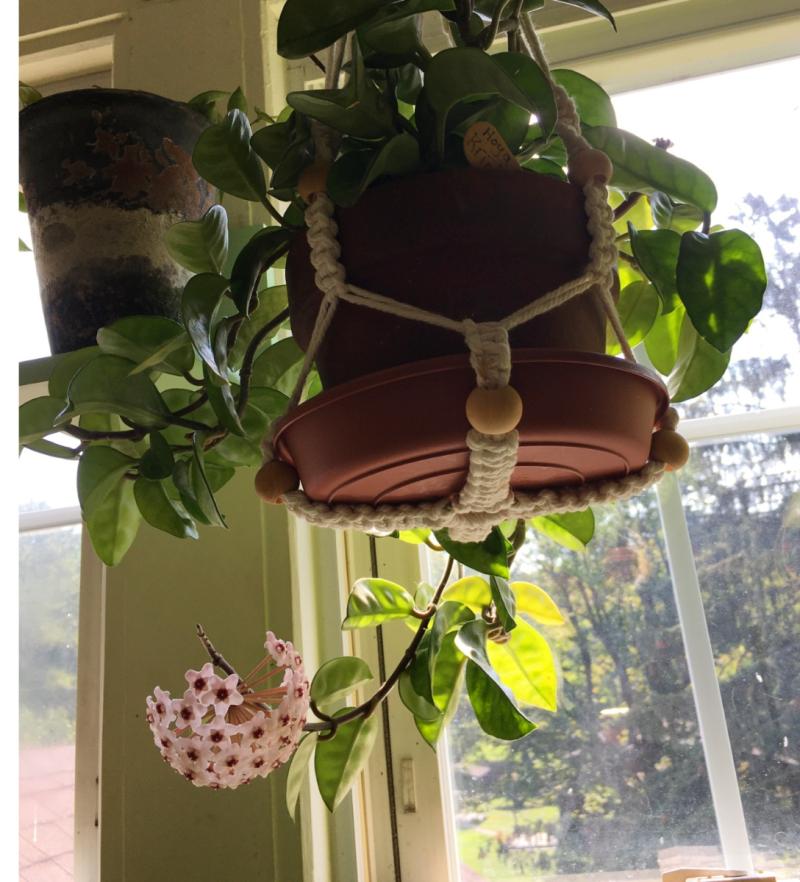Various Chords
Playing and jamming difficulties...HELP ME!
That's correct. ![]()
What dulcimer tuning are you basing your chord chart on?
updated by @strumelia: 12/20/22 10:54:25AM
That's correct. ![]()
What dulcimer tuning are you basing your chord chart on?
Just a little reminder that this site costs money to keep running, and for 14 years it has survived thanks to the thoughtful donations of members.
Rather than always being the same few people who donate regularly... are there any members out there who enjoy using FOTMD but have perhaps never made a donation? We could use a little monetary boost before the end of the year, to cover server costs etc.
Today I'd like to appeal especially to members who have never donated before.
To make a donation, use the Paypal donation button at the top of the fotmd Home page. (you don't need a paypal account to do it, just a credit card can be used).
Any amount is appreciated, no matter how small. But if you donate $35 or more, a "Patron" label is applied to your profile page.
Thanks so much, Friends! 
wmacky, you said:
"For example fret space 13/ 14 is smaller than fret 15/16. Shouldn't the opposite be true? Also look at fret space 6/7. the spacing is smaller than 7/8? I believe those fret are 1/2 step apart right? Shouldn't the frets that are a 1/2 step apart be getting closer as you approach the bridge?"
First of all-
From frets 6 to 7 is a whole step. (From frets 6.5 to 7 is a half step.)
From frets 13 to 14 is a whole step. From frets 15 to 16 is a whole step. From frets 7 to 8 is a whole step.
The other confusion here is that you seem to have posted pictures of two different dulcimers, both of which are similar to each other. One seems to have normal-ish spacing, the other seems a bit 'off'. For discussion purposes, we need to be clear as to which dulcimer is which, and which picture we are all commenting on.
I agree, chamois cloth works well and is less ugly than rubber shelf liner. Buy it cheaper at a car parts section, because people use it to polish/dry their cherished cars with.
Thank you for that link Robin. I had not seen that video of Jean's family gatherings before. 🎄
Whaaaat?? I didn't think they showed picture clues on that show! Seems crazy.
That's actually pretty impressive! Especially also considering that "mountain banjos" are actually a defined type of banjo.
@dtortorich , you can find a few additional Christmas carol videos if you do the same thing but use the search term "holiday".
Hi there! I just now went to FOTMD's Video section and typed "Christmas" into the search window there, and this popped up:
https://fotmd.com/search/results/jrVimeo,jrYouTube,jrVideo/1/25/search_string=Christmas
Hugs to all who are missing their sweet furry companions... 


Yes I like "River lute" as well. This is part of a topic that usually inspires some debate. But yes technically a mountain dulcimer is defined as type of zither (box with strings going over the top, and no real neck). Lute family is broad and includes guitars, and lutes all have necks. Yours can be most accurately described as a (mostly) diatonically fretted guitar.
@fharlm , the ones in your link are all pretty big. I had a personal sized indoor rebounder for a year or so. I liked it at first, but eventually found it made me a little dizzy. I occasionally have bouts of vertigo, so that's not the greatest fit. If not for that it might have been fine. I do suggest you get one that is made specifically for one-person fitness use and not for multi-kids fun use. And pay attention to the weight limit suggestions.
I switched over to having a rowing machine in my living room, which seems to suit me way better. 😃
I have always like 'mustached' dogs. They remind me of my very first dog Facha, and my big sweet mixed breed dog Jasper.
Here is a working link to Ken's article:
https://fotmd.com/strumelia/group_discuss/2316/ken-hulmes-i-just-got-a-dulcimer-now-what-article
Leo, in my prior post I said the hoya "Krinkle 8" flowers smell just like chocolate covered cherries! Most hoyas release more intense scent at night because they are primarily pollinated by moths.
My hoyas are kept inside my house, in partly-sunny windows.
Hoyas don't like excessive watering, and they tend to have tough thick leaves. So in a way they are a bit like succulents. The potting medium is important- they like a pot that is not too large for them, and orchid mix that has chunks of bark and maybe some perlite or sphagnum in it. They grow on trees in the wild and can be found all over the world.
Some varieties do and some don't Dusty. You have to do some research on that. My hoya Krinkle8 did not drip nectar. I think my hoya wayetii did drip a little. I agree that would be annoying.
You can get cuttings or young started plants on Etsy. I got 2 Krinkle8 young plants and potted them together in a hanging pot... that gave me a nicer bushy young plant to start with. Now a year later it has grown to twice the size.
They are epiphytes, like orchids. So they like airy soil that has lots of drainage and bark chips.. like chunky orchid potting mix soil. They do not thrive in typical potting soil that has little aeration.
Here is the first bloom of my Krinkle 8, a year after i potted the young plants together... there are now two other buds forming:


@Fharlm - that's a lovely spider plant! It's been decades since i had a spider plant, but I agree they give back a whole lot in return for a little considerate care.
I've had several of my indoor hoya plants bloom for me in the past two months. The most exciting one was my hoya Krinkle 8. The spherical umbel of pink blooms smelled exactly like chocolate covered cherries!
"If you habitually wear slick polyester slacks, then a shelf-liner is useful."
I think if you wear slick polyester slacks, it's probably best that you not venture out in public anyway.
It's a great solution. But to confirm what Dusty warned on- do NOT store the rubber shelf material directly in contact with the wood. It WILL leave strange waffles patterns on your dulcimer over time. Not residue, but actually lightening the color of the wood so you can't just clean it off.
On behalf of all site members, I just wanted to give a hug of appreciation to our wonderful VOLUNTEER Welcome Wagon here on FOTMD.
Our "Greeters" post warm welcome comments on the profile page of every new member who joins the site. They do this simply because they know how good it feels to receive a friendly post or two on your page when you first join. Our greeting team puts the "friends" in Friends of the Mountain Dulcimer, and they do it out of their own kindness.
I'd like to add that there are no special requirements for joining them as a FOTMD "Greeter"- you just have to love people and make a friendly welcoming comment on new members' profile pages with some regularity- whenever you feel you can. If you'd like more info just catch FOTMD Moderator Jim Fawcett early on most mornings in the ChatRoom here on FOTMD. To open the Chat, click the blue "quote bubble" button at bottom right of any page on the site.
Let's all give our thanks to our site's current Welcome Wagon Team!:





==========================================
Hey, that's so nice of you to let me know how it helped you! Makes my day. 
If anyone wants to check it out, here's a link:
https://dulcimer-noter-drone.blogspot.com/2010/09/few-of-my-posts-about-modes.html
My own thoughts are that a VSL of between 25"-27" is really ideal if one is intending to play in the key of D a great deal. (most dulcimers play in D more than in any other key). Once you get in the longer 28-30" vsl range, you are going to start breaking strings a little more often, and the shorter you go ...say 22-24", the heavier strings you will need to put on in order to play comfortably in the key of D.
That's the reason epinettes (which often have a typical vsl of only 21" or so) are usually tuned higher for the key of G (3 steps up from the usual dulcimer D). And dulcimers longer than 28" scale length often do better when tuned to C (1 step lower than the usual D).
Beginner dulcimer players often worry that they 'need' a shorter vsl because they have small hands. What they don't take into account are two important factors: 1) They be using also their thumb while fretting ...which extends their reach way beyond what most guitar players do using only four fingers ...and 2) Because of the drone-friendly tunings of dulcimers in the first place, one frequently is making use of open strings while fretting chords. So it's not really all that common or critical to make a long stretch when chording. When it does come up that a long stretch is needed, your thumb can neatly solve the issue most of the time.
While I wouldn't necessarily recommend a 28-30" vsl dulcimer to people with smaller hands, I think that vsl's of 25-27" are great for people with any size hands, even small hands. Just my two cents.
Folks, be sure to look over ALL the discussions in the "How Do I...?" forum, for help in figuring out how to do things on the site here.
Check it out, the answers may already be there waiting for you:
@molly-mccurdy - I need to contact you right away. I've sent you a private note here. Can you please check your FOTMD inbox and respond to me? Thank you! -strumelia
@marg - if you are tuning to the key of D, then the note D would be "1" as you count on your fingers with the alphabet... and the fifth (5) from there would be A (D, E, F, G, A). That's the 1 (the tonic or key note) and its 5th note in the scale... D with A. Hence the popular tuning DAA.
All - but two - of my almost hundred banjers are fretless.
and i thought *I* had a lot of banjers. 
Well that's a really lovely instrument! I like that it's got a relatively shallow depth, so the sound will be bright and project nicely. Love the little sound holes too. Must be a bit of a job to tune though!
Who made your fretless banjo?
Welcome to the site!
Wow what a lot of music playing runs in your family- how nice! 
That's a crazy adventure Ken. Hope you don't get hit too badly by the hurricane now. 
+Plus to what Dusty said, but with one added thought:
Usually hardwood bridges are preferred and give better tone. Violins and banjos most typically have maple bridges.
However, I found out that with early style banjos the best most resonant sound is achieved with softwood bridges like spruce, cedar, pine, etc. I was at an early banjo gathering once where a fellow was selling bridges made from many various woods, and it was suggested by more than one person that i try a softwood bridge. I tried many bridges that day and they were right- the evergreen ones gave a noticeably richer more resonant tone... which very much surprised me. I bought several and put them on my 3 early style banjos.
I can only guess it's a similar effect as when a dulcimer has a spruce, redwood, or cedar top- which is softer wood but gives a very mellow resonant tone. I should note that the early fretless banjos use nylgut strings rather than steel strings and this may have relevance, other things being equal.
So don't destroy that cedar bridge once you make a new hardwood one. Swap them back and forth and do a sound test! ![]()
That's pretty cute Sheryl! Clever.
I usually take a small needle nose pliers and bend the very ends right back on themselves like a little loop.
Yeah that does sound awesome Ken. Have a great time! Don't catch covid.
If I never used the 6+ it probably wouldn't matter to me (?).
You said you would like to probably experiment with chord playing, so i strongly suggest adding at least the 6.5 fret. (And it's 'octave companion' 13.5 fret if you get up that far)
Only enough pressure to make the string touch the fret. Sometimes with higher frets, if you press the string all the way down to touch the wood, then you are further stretching the string and making it sound sharp.
I think skip means you don't have to push the string all the way down to the wooden fretboard when pressing down the string between the frets. Also try to keep the noter not slanted- it gives a clearer sound. (unless you are purposely using the slanted noter technique for other reasons)